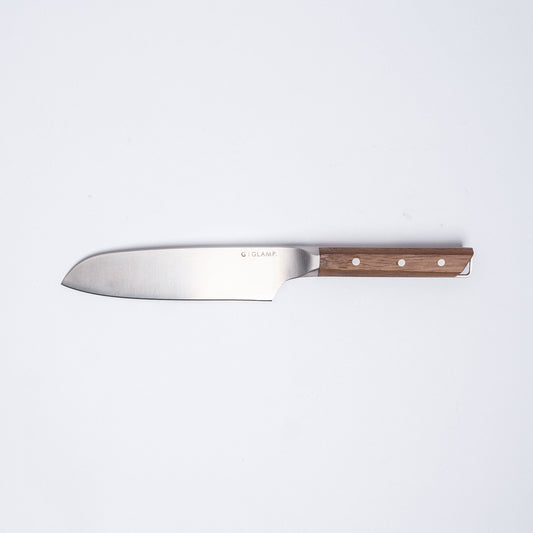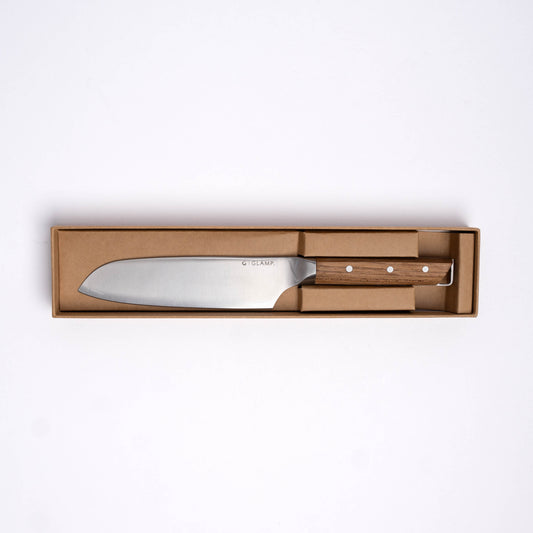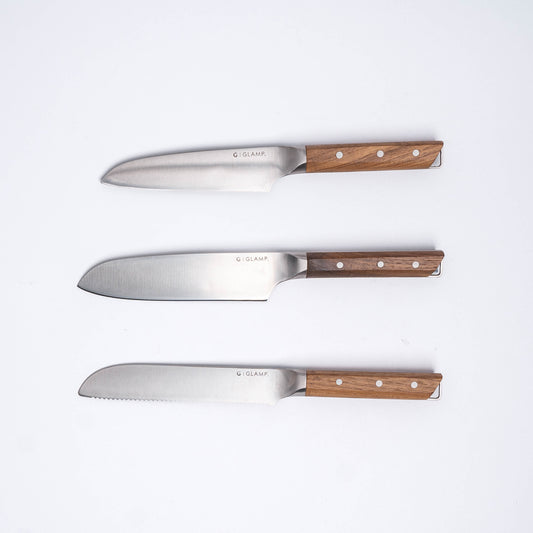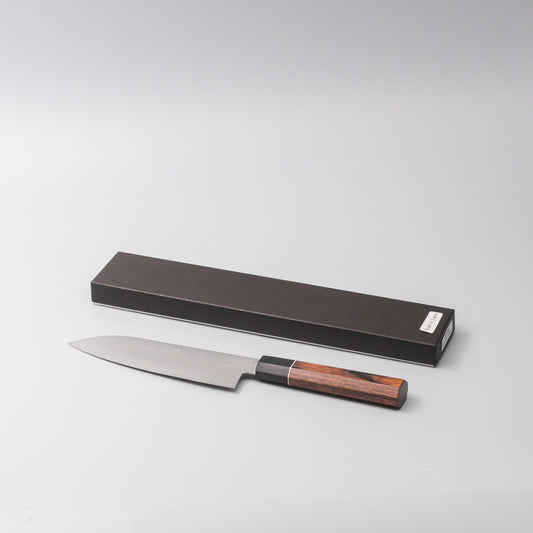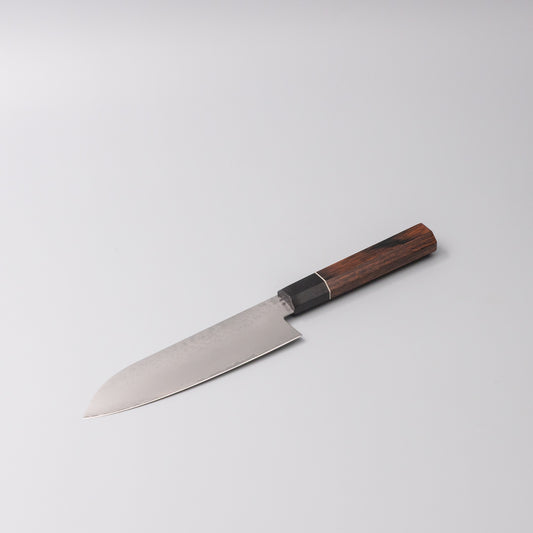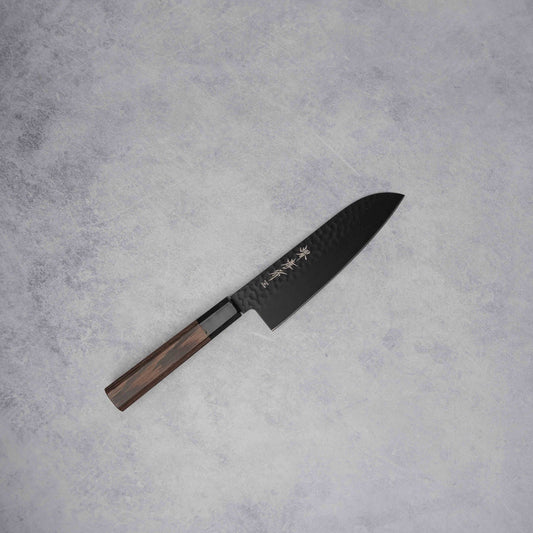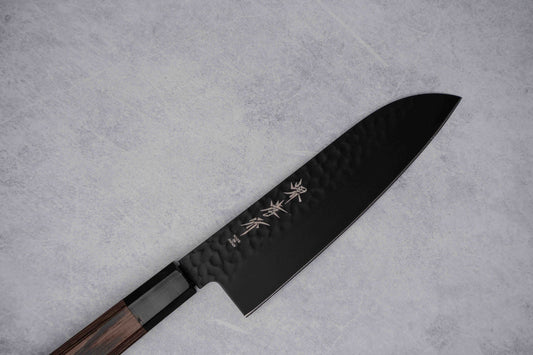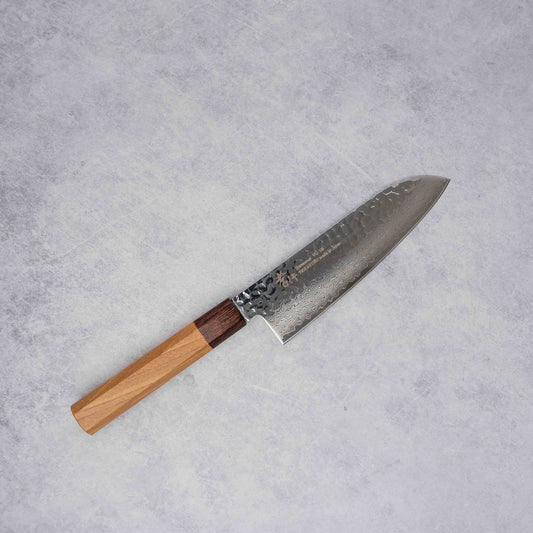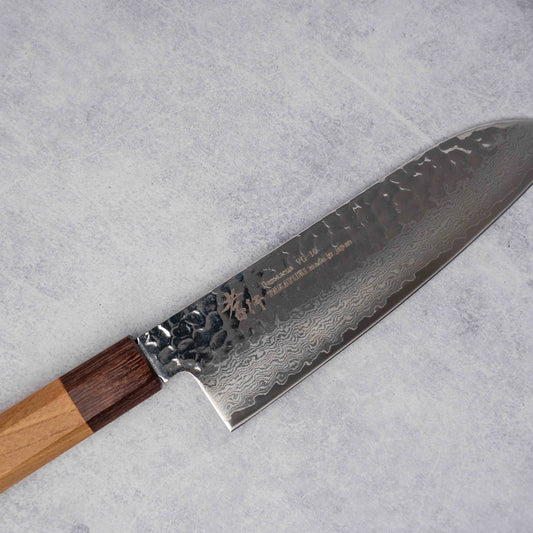Collection: Santoku Knives
Mastering the Santoku: Your Essential Guide to Efficient Cutting
If you're looking to elevate your kitchen experience, the Santoku knife is a must-have tool for home cooks and professionals alike. A staple in Japanese kitchens, Santoku knives are known for their precision, versatility, and ability to make chopping vegetables, slicing meat, and dicing ingredients easier and more efficient. At MIJ.com.au, we offer a premium range of Japanese Santoku knives that combine tradition, durability, and cutting-edge craftsmanship.
What is a Santoku Knife?
The Santoku knife, often referred to as the “three virtues” knife, is a versatile Japanese kitchen tool that excels at slicing, dicing, and chopping. Whether you're working with fish, meat, or vegetables, a Santoku is designed to make food preparation easier and more enjoyable. The name "Santoku" reflects its ability to master these three cutting techniques, making it an indispensable knife in every kitchen.
Choosing the Right Santoku Knife
When buying a Santoku knife, it's important to choose the right combination of features for optimal performance and ease of use. A stainless steel blade offers long-lasting sharpness and is resistant to rust and corrosion, making it perfect for daily kitchen tasks.
A dimpled blade, also known as a Granton edge, helps prevent food from sticking to the blade during cutting, especially useful when slicing through wet or sticky ingredients like carrots or fish. Look for a comfortable handle that provides a non-slip grip for better control and balance while cutting.
A balanced weight and a sharp blade edge will make chopping, slicing, and mincing more efficient and reduce fatigue during long prep sessions.
Understanding Santoku Knife Design
A typical Santoku knife features a blade length of 5 to 7 inches, with a flat edge and a rounded sheep’s foot tip. The blade curves down at an angle near 60 degrees, providing precision for fine cutting tasks and an ideal shape for chopping vegetables and cutting meat. The flat blade edge allows for a smooth up-and-down cutting motion.
The unique tip design enhances control, making the Santoku excellent for delicate work like slicing herbs or finely dicing garlic. Compared to a gyuto or chef’s knife, the Santoku is shorter, stockier, and better suited for precise cuts on smaller ingredients.
Safety Tips for Using a Santoku Knife
To ensure longevity and safe usage of your Santoku knife, follow these key tips. Always hand wash your knife with warm water and mild soap to prevent blade damage. Store your knife in a knife block, sheath, or magnetic strip — keeping it away from children and pets.
Use a cutting board to avoid damaging both the knife and your countertop. Keep your fingers curled and your grip secure to reduce the risk of injury while cutting.
Cutting Techniques with a Santoku Knife
Santoku knives are designed to help you master a variety of cutting techniques. Use a gentle rocking motion to chop vegetables, herbs, or cut meat efficiently. Apply light pressure and let the sharp blade edge do the work for you — no need to force it.
For slicing, use a smooth motion from heel to tip, ensuring a clean and even cut every time. Practice mincing, dicing, and chopping with different ingredients to develop your agility and confidence.
Sharpening and Maintenance
To maintain your Santoku knife's sharp edge, proper maintenance is essential. Use a whetstone for sharpening, keeping the angle consistent to preserve the integrity of the blade. Clean and dry your knife immediately after use to prevent corrosion, especially if working with wet or acidic foods.
Use a honing steel or a knife sharpener regularly to keep the blade edge aligned and ready for use. Store your knife in a dry area to avoid moisture buildup and potential rust.
Santoku Knives vs. Chef’s Knives
Many people wonder how Santoku knives compare to chef’s knives or gyuto knives. A chef’s knife typically has a curved blade and longer length (6–14 inches), making it more suitable for rocking cuts. A Santoku, on the other hand, offers better precision for finer tasks and is lighter and easier to handle, especially for home cooks. While both are versatile, the Santoku is ideal for those who prioritize ease of use, agility, and precise control in the kitchen.
Conclusion: Why a Santoku Knife is a Must-Have
Whether you're prepping vegetables, slicing meat, or creating a quick weekday meal, the Santoku knife is your ultimate cutting companion.
Designed with precision, balance, and control, it is truly a must-have in every kitchen arsenal. With proper maintenance, a good Santoku knife can last for years, delivering clean, sharp cuts every time.
Browse our expertly crafted range of Japanese Santoku knives at MIJ.com.au, and discover the perfect knife to match your culinary style. Whether you're a seasoned chef or a passionate home cook, a Santoku knife will transform your cutting experience — making cooking not only easier, but a true joy.
-
1 review
Knife Glamp 25cm Santoku
Regular price $63.60Regular priceUnit price / per$79.50Sale price $63.60Save 20% -
1 review
Knife Gift Set Santoku Bread & Paring Glamp
Regular price $159.20Regular priceUnit price / per$199.00Sale price $159.20Save 20% -
1 review
Knife Damascus 17cm Santoku Made in Japan
Regular price $159.00Regular priceUnit price / per -
No reviews
Knife Saikai Takayuki Kurokage 17cm Santoku
Regular price $359.00Regular priceUnit price / per -
No reviews
Knife Saikai Takayuki 17cm Santoku
Regular price $299.00Regular priceUnit price / per
Hand made in Japan
Over 100 years of tradition
Same day dispatch
Dishwasher and microwave safe
